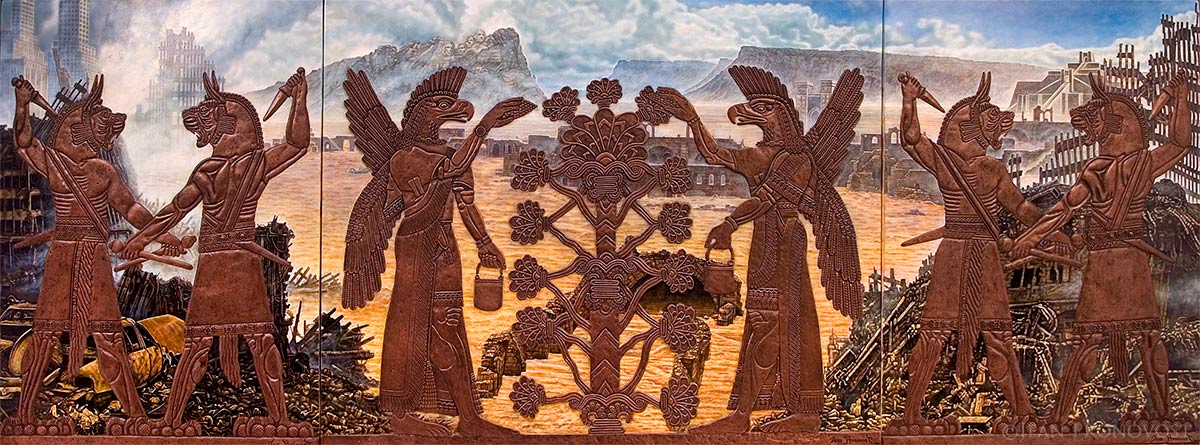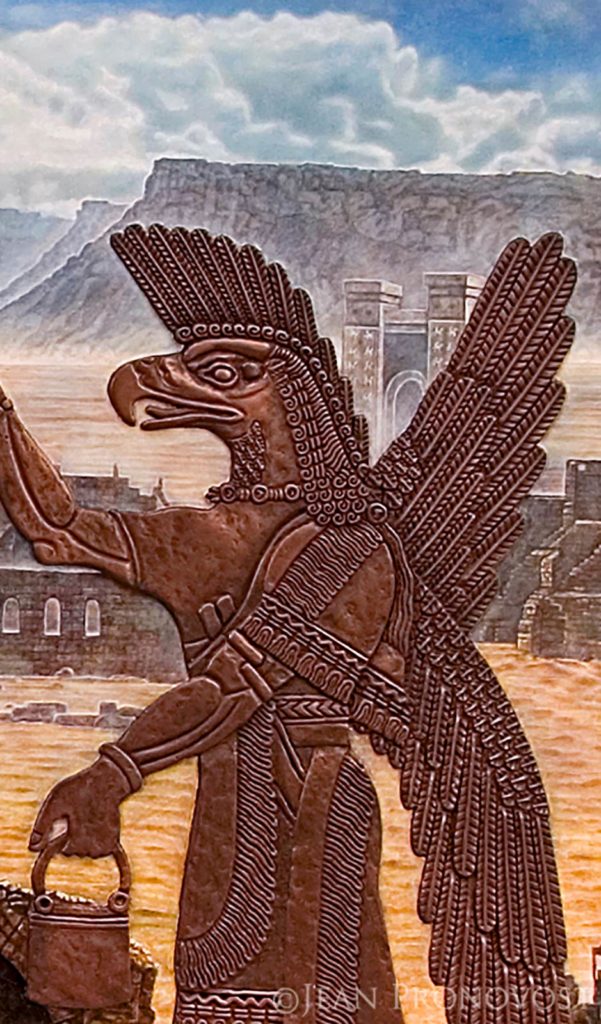TRIPTYCH - ANACHRONISM OF YESTERDAY AND TODAY by jean pronovost
In this epic allegorical triptych painting, we see ancient mythological symbolism recreated with a contemporary message for our world today. We have a hunger for power and will resort to great violence to keep it and obtain more. The title, ‘Anachronism of Yesterday and Today,’ encapsulates the brilliance and many layers of this piece. It highlights the idea that we are repeating the same mistakes of the past, but with modern technology and weapons.
Across the background of the three panels, there are some contemporary scenes such as skyscrapers, Mount Rushmore, and some beautiful untouched majestic mountains, and then some bold architecture of the past, namely the Ziggurat of Ur temple. This intermixing of the modern and the ancient is anachronism at work, cleverly indicating how the innovative and mighty civilizations from centuries ago have collapsed and their power lost. Nature through this background is picturesque and serene, with its desert sands, blue skies, and white clouds; there is a balance in beauty in the way the sky and earth coexist together. Mountains have long been inspirational for humans: we attempt to build taller and taller temples or towers to reach the gods and the upper world, just as our ancestors did.
Through the middle ground, the story and feeling begin to change. We see scattered here the ruins of ancient cities, and the smoking rubble and remains of the World Trade Center in the wake of the terrorist attacks of 9/11. Just in front of this smoldering wreckage is more debris: burned-out cars, pieces of machinery, twisted metal and fragments of buildings. All of this is evidence of war, power, and greed – the cost here is the same as it was for the ancients – death, destruction, chaos, and more violence. Nothing has really changed; whether you speak of the Ancient Mesopotamian people or those in the current-day USA, wars still rage about power. History’s lessons fall on deaf ears.
In the foreground, across all three panels, we see some zoomorphic gods. Looking to the left and right panels, there are two sets of part-human and part-lion gods that are fighting: the head and paws of the lion represent strength, and along with the human body these creatures are symbolic of the earthly. Each holds a scepter and a pointed dagger, representing power and violence. They face each other and intend to kill one another. These aggressive deities are young, strong, and territorial; they want to keep their land and acquire more. They represent us – they are made in our image. The old ruins behind these zoomorphic fighters are the remains of their civilizations, the result of conquests and endless wars.
On the center panel, there are another set of deities. These two gods have the body of a human and the heads and wings of an eagle. The eagle symbolizes higher wisdom and knowledge. Instead of fighting, they are picking fruit together from a tree and also bringing it water. They share the natural resources and care for the environment; there is balance and peace. These two zoomorphic gods are living in harmony with each other and with their environment, even though they are surrounded by war. They prove that we can go higher than our nature; we can be better than we are and have been.

